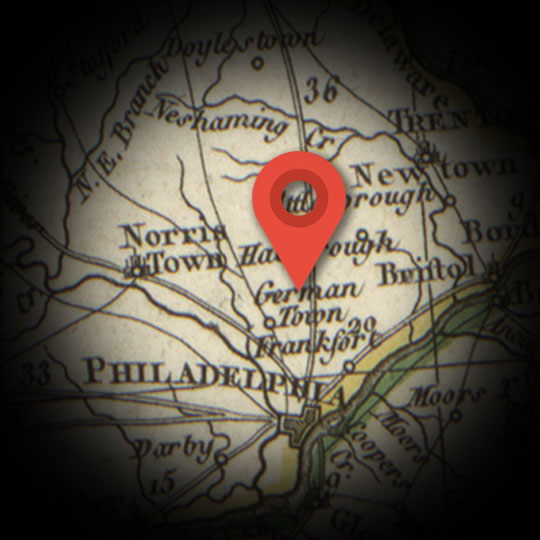BATTLE OF GERMANTOWN
Explore
Shortly after Philadelphia surrendered to the British commander, Sir William Howe, on September 26, 1777, Howe seemed hungry for more confrontations with George Washington’s army.
The British, after all, were on something of a roll. They had bruised the Americans both at the Battle of Brandywine and the Battle of Paoli.
Leaving behind an adequate force to keep Philadelphia pacified, Howe returned to the field and massed his forces here in Germantown, PA, hoping to draw his enemies out. Washington hoped to gain and leverage an element of surprise, and repeat his successful gambit at Trenton from the past winter.
Alexander Hamilton had only recently met John Laurens, the South Carolinian who had joined Washington’s “family” of young and promising aides a few weeks before.
In the midst of the battle, on October 4, 1777, nearby farm fields caught fire. The smoke from the fire added to the already prodigious smoke created by 18th Century small arms and artillery, and added an ethereal quality to the melee.
Washington and Hamilton were powerless to rally the troops when they began to run out of ammunition and became flustered from friendly fire incidents.
Washington played his part more conservatively after this loss, and none of Howe’s maneuvers were able to bait him again.
After Germantown, Hamilton would join Washington in withdrawing into winter quarters at Valley Forge.

TIME FRAME:
October 4, 1777
